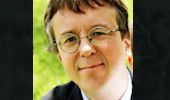The Physics & Astronomy Colloquium Series presents Hurbert de Guise of the Lakehead University, Ontario Canada on “Latin squares and mutually unbiased bases: the phase space picture” on Friday, Oct. 17, at 4:10 p.m. in Walter 245.
Abstract: Latin squares have been studied as mathematical objects since Euler introduced the 36-‐officer problem in 1782. More recently, Fisher (amongst others) described how Latin squares can be used in the design of experiments; Latin squares have found a host of other applications.
Mutually unbiased bases (MUBs) have a much more recent history; Wootters showed they are an optimal choice of measurements to reconstruct the density matrix of a general quantum state.
In this presentation I will describe a connection between MUBs and orthogonal Latin squares. The common bridge linking the two are curves in discrete phase space: certain types of MUBs can be represented by a curve, and this curve can be used to generate – under the right conditions -‐ a Latin square. Logical operations transforming sets of MUBs amongst themselves can transform one set of orthogonal Latin squares into another set.
















Comments